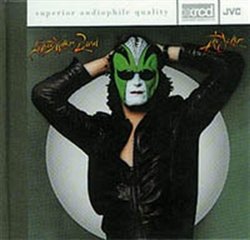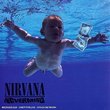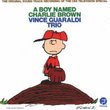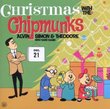| All Artists: Steve Miller Band Title: The Joker (XRCD) Members Wishing: 5 Total Copies: 0 Label: Jvc / Xrcd Original Release Date: 1/1/2008 Re-Release Date: 3/3/1998 Genres: Pop, Rock, Classic Rock Styles: Vocal Pop, Blues Rock, Album-Oriented Rock (AOR) Number of Discs: 1 SwapaCD Credits: 1 UPC: 693692004328 |
Search - Steve Miller Band :: The Joker (XRCD)
 | Steve Miller Band The Joker (XRCD) Genres: Pop, Rock, Classic Rock
Extended resolution audiophile CD version of this classic rocker's 1973 album features the title track, The Joker, which was his first #1 hit single, as well as Sugar Babe & Something To Believe In. |
Larger Image |
CD DetailsSynopsis
Product Description Extended resolution audiophile CD version of this classic rocker's 1973 album features the title track, The Joker, which was his first #1 hit single, as well as Sugar Babe & Something To Believe In. Similar CDs
Similarly Requested CDs
|
CD ReviewsReview of the XRCD version of this title Stadium Studios | West-Central Wisconsin, United States | 05/28/2009 (2 out of 5 stars) "I guess I am more a fan of the later Steve Miller Band. I feel the album is sort of uneven. I would give the album * * *.
This review is about the XRCD itself. Boy, I am not sure what to say here after dropping $35.00 on this XRCD other than, the fact that I spent $35.00 on this XRCD has nothing to with my review of it... kind of. It comes in a hard-cardboard, book-style package. It is 5 1/4 inches tall, 5 9/16 inches deep and 3/8 inch thick. That is the same as a regular CD jewel case except a little taller. It has sticker-style artwork with a matte finish wrapped around the cardboard, which is then creased and folded to resemble a book. I am not a real big fan of this kind of packaging but it is very nicely done here. As an example, Warner's book-style Blu-Ray's are the same as this. When we open it up, it has a stitched-style-spine booklet, which is glued to the inside of the cardboard case. They used a nice heavy paper here. The first three pages are album art. I do not have the original LP but I believe it to be the sleeve art. The next page is a diagram of the "jvc xrcd cutting block". The next three pages go on to explain why this thing costs so much and why it "sounds" so good. They talk about the 20-Bit, 128 kHz K2 super coding. Ahhhh, okay. This supposedly came out in 1998 so I guess that was pretty good for the time. Then they go on and on about the mastering process. The last page is the credits for the album and the mastering. Lastly, we come to my very favorite part.... This is a $35.00 high end, audiophile CD right? Well, they house the XRCD in a paper sleeve glued to the inside of the package!!! Not only is it a paper sleeve, it is hard paper with a hole in the middle (on both sides) so you can see the nifty XRCD logo on the inner ring of the CD. I very carefully tried to remove my "superior audiophile quality" XRCD from it's hard paper sleeve without getting any fingerprints on it. Us audiophiles know that fingerprints mean lost little zeros and ones right? Well, I get it out with no fingerprints of my own just to discover that someone else's fingerprints are on it, most likely the dude that took it off the stack and pushed it in this crappy sleeve. After careful examination of the rest of the CD, I find it has paper scuffs all over it with a whole patch of them where it was stuffed into this sleeve!!! They also thought it would be a good idea to put heavy, rubbery ink on the CD for printing. You know, because a "superior audiophile quality" CD should have heavy, rubbery ink on it so it doesn't stay balanced when spinning at over 460 rpm. The sound from the XRCD itself? I can tell no difference between this XRCD and the standard CD version of the same album. I have done a lot of A/B comparisons between old CDs and new remasters of the same title. I have also A/B-ed a lot of CDs to SACDs and even vinyl to CD. There is usually a pretty noticeable difference, even to the novice (especially with cans on) and I can just tell no discernable difference in the quality of the sound between the two. If there is a difference at all, I would say that the LFs might be a touch snappier. I think that SACD's got too expensive to make for the few of us buying them so they had to come up with something for the audiophiles I guess. This is my first and last XRCD purchase. If you want to hear some real quality Steve Miller Band, try to get your hands on the old DTS version of "Fly Like An Eagle" (NOT the DVD-Audio version). Man, what an audiophile treat that one is!! " |

 Track Listings (9) - Disc #1
Track Listings (9) - Disc #1






